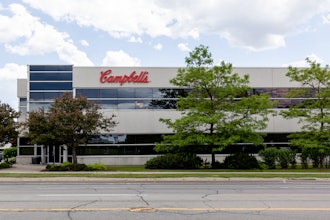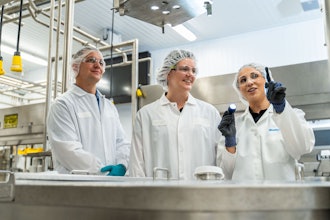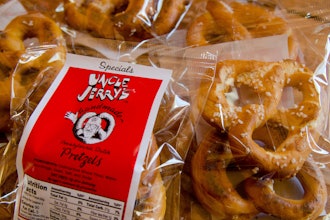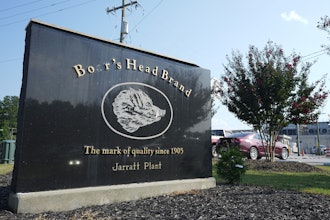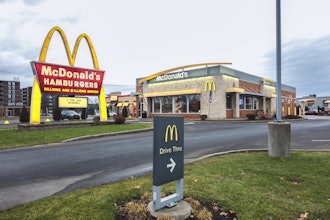
Creating a recipe is just the first step in a food product’s lifecycle. In a proper food manufacturing operation, recipe management should entail:
1. Creating the recipe
An effective recipe starts with a complete list of all the ingredients required to produce the food item, including raw ingredients and consumables (such as packaging). Each item should have a clear name, description, and quantity.
2. Adding the production process
Beyond ingredients, a food recipe must also define the production steps: the cooking, mixing, chilling, baking, bottling, etc. This is your production routing: the step-by-step guide that includes tasks, equipment, and estimated times for each operation. This ensures your recipe isn't just correct on paper but ready for consistent execution on the production floor.
3. Integrating recipes with inventory
Tying your recipes to your stock items in your production management system enables precise tracking of ingredient usage. With defined quantities in each recipe, you can calculate how much of each ingredient you’ll need for upcoming batches, check against your current stock levels, and plan purchases accordingly. This reduces the risk of shortages or spoilage due to overstocking.
4. Enabling product variations
Configurable or matrix-style recipes help you manage product variations, like different flavors, packaging sizes, or dietary versions (e.g., gluten-free). Instead of creating a brand-new recipe for each variation, a flexible recipe structure allows you to mix and match ingredients and steps based on customer or market requirements.
5. Managing recipe updates
Ingredient changes, process improvements, or supplier substitutions are inevitable. Recipe version control allows you to record and track these updates so changes can be rolled out smoothly. This also lets you revert to earlier versions when needed or trace back changes for food safety audits.
Benefits of effective recipe management
Managing recipes brings significant benefits in efficiency, cost control, and compliance. Here’s how:
1. Standardization and consistency
A well-defined recipe ensures that every production run uses the same ingredients, quantities, and steps, no matter who’s on shift. This leads to a consistent product and helps meet food safety, allergen control, and labeling regulations.
2. Better hand-off from R&D to production
Standardized recipe management helps translate your R&D or test kitchen results into clear, repeatable instructions for your production team. Everyone, from chefs to line workers, uses the same data, reducing miscommunication and human error. This is especially important when outsourcing or scaling production.
3. Improved ingredient sourcing and inventory control
By precisely documenting what goes into each batch and how much it costs, you can source ingredients more strategically. Integrated inventory means you always know what you have, what you need, when you’ll need it, and what it costs, making it easier to avoid stockouts, overstocking, and cost overruns.
4. Optimized production scheduling
With ingredient needs and processing times clearly defined, you can quickly forecast material requirements for upcoming orders and schedule production to ensure raw materials are on hand when needed. This reduces downtime and improves delivery performance.
5. Accurate cost control
With defined ingredient quantities and labor steps, you can accurately estimate costs per unit even before production begins. During manufacturing, you can track actual ingredient usage and labor time to compare with estimates and improve future planning and pricing.
6. Higher quality and less waste
Defined recipes and routings mean every batch follows the same process, improving product quality and reducing waste from errors or inconsistencies. Monitoring yields and cycle times also helps identify efficiency gaps in the process.
7. Full traceability
A complete recipe management process includes tracking ingredient lots and finished batches, which is crucial for food safety and compliance. You’ll know exactly which batch of ingredients went into each product and which customers received them. This makes recalls and quality investigations faster and more effective.
Managing recipes with food manufacturing ERP
A manufacturing ERP system like MRPeasy helps growing food manufacturers achieve all this by integrating recipe management with inventory, purchasing, production, sales, and finance—all with an SME-friendly price tag.
With MRPeasy, you can plan production, control recipe versions, track ingredient usage, and calculate costs in real time. The lot tracking and quality inspections features enable full traceability while the production tracking module enables you to collect data directly from the factory floor and turn it into easily digestible efficiency statistics and insights.
With centralized data, all departments—R&D, purchasing, production, QA—can access the same live recipe and stock data. This eliminates miscommunication, makes workflows smoother, and helps your business scale up with minimal growing pains.
Learn more about MRPeasy by visiting https://www.mrpeasy.com/.











